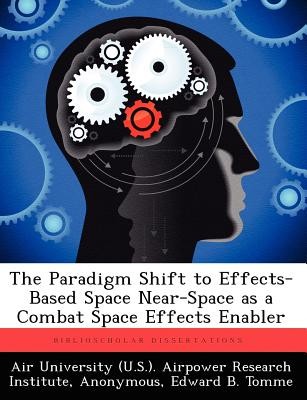
- We will send in 10–14 business days.
- Author: Edward B Tomme
- Publisher: BiblioScholar
- ISBN-10: 1249374561
- ISBN-13: 9781249374565
- Format: 18.9 x 24.6 x 0.5 cm, softcover
- Language: English
- SAVE -10% with code: EXTRA
The Paradigm Shift to Effects-Based Space Near-Space as a Combat Space Effects Enabler (e-book) (used book) | bookbook.eu
Reviews
Description
The thesis of this paper is that space is currently a medium through which warfighters get effects- typically those effects are strongly related to Command, Control, Communications, Computers, Intelligence, Surveillance, and Reconnaissance (C4ISR)-- not just a place and not based on a specific platform type. Until recently, most C4ISR effects have been delivered from satellite platforms (apologies to our manned and unmanned air-breathing ISR assets). The reason for operating in such a manner was that, in general, no other way existed to obtain similar effects. The extreme costs of space were justified due to their monopoly on the ability to provide those needed effects. However, with the advent of near-space concepts, those same effects can be obtained in a different way, especially for operational and tactical users. The paper discusses strengths and weakness of near-space, doing a top-level comparison with satellites, manned ISR, and UAVs. Satellites are shown to have great strengths for strategic missions where freedom of overflight is required. However, for operational and tactical missions-- primarily after or just before commencement of hostilities-- near-space holds strong advantages, especially over so-called tactical satellites
EXTRA 10 % discount with code: EXTRA
The promotion ends in 15d.16:52:41
The discount code is valid when purchasing from 10 €. Discounts do not stack.
- Author: Edward B Tomme
- Publisher: BiblioScholar
- ISBN-10: 1249374561
- ISBN-13: 9781249374565
- Format: 18.9 x 24.6 x 0.5 cm, softcover
- Language: English English
The thesis of this paper is that space is currently a medium through which warfighters get effects- typically those effects are strongly related to Command, Control, Communications, Computers, Intelligence, Surveillance, and Reconnaissance (C4ISR)-- not just a place and not based on a specific platform type. Until recently, most C4ISR effects have been delivered from satellite platforms (apologies to our manned and unmanned air-breathing ISR assets). The reason for operating in such a manner was that, in general, no other way existed to obtain similar effects. The extreme costs of space were justified due to their monopoly on the ability to provide those needed effects. However, with the advent of near-space concepts, those same effects can be obtained in a different way, especially for operational and tactical users. The paper discusses strengths and weakness of near-space, doing a top-level comparison with satellites, manned ISR, and UAVs. Satellites are shown to have great strengths for strategic missions where freedom of overflight is required. However, for operational and tactical missions-- primarily after or just before commencement of hostilities-- near-space holds strong advantages, especially over so-called tactical satellites


Reviews